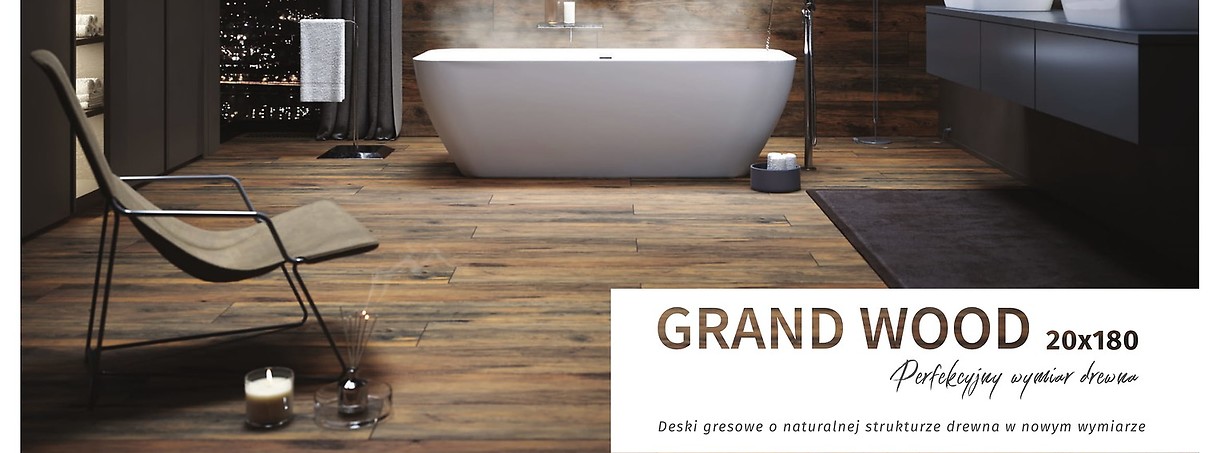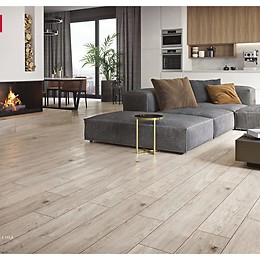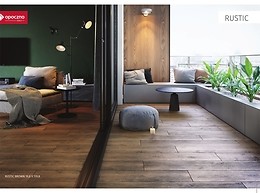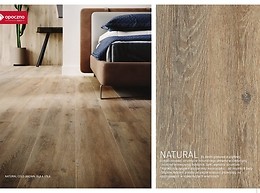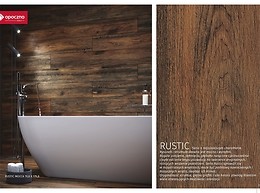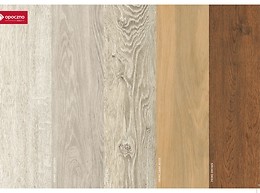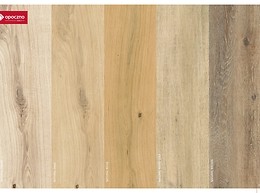
Trends
How to lay wood-look tiles? 3 steps to a natural effect on any surface

Wood-look tiles are one of the most fashionable arrangement trends for a reason. Their use gives any interior a unique character and warmth, and wood-look tiles both on the floor and walls have proven to be extremely functional - they can be used in living rooms, bedrooms, on terraces and even bathrooms. But how can you make a composition using wood-look tiles almost indistinguishable from the natural raw material? Here is our advice on what to pay close attention to before and during assembly. Wood-look tiles are a synthesis of tradition and modernity, in which wood defines a completely new quality of interior design. However, although they are extremely popular, not everyone knows how to create a perfect and, most importantly, natural effect. What should you remember before laying wood-look tiles?
1. Choose the perfect wood-look tiles
Wood inspired tiles have the shape of natural floor boards. However, you can choose their size. For example, tiles from the Grand Wood collection are available in various sizes, similar to natural boards:20x120 and 20x180 cm. What are the options of a large format wood-look tile? First of all, it allows you to reduce the number of joints and give your interior more spaciousness. It is also worth paying attention to the surface of the tile. The structured surface will be much more natural, with the texture reflecting real boards. This effect will also be strengthened by the grout. Which grout will work best for wood-look tiles? Let's take a minimum width of 2 mm. What colour of grout should you choose for wood-look tiles? Preferably a few tones darker than the tiles. It is also good to pay attention to the tonality - tonal wood-look tiles are a guarantee of the diversity of graphics on the tile, reflected in the form of the non-uniform colouration and contrast of the rings.
2. Get to know each other better
It is best to start working with wood-look tiles by checking the contents of the package. Wood-look tiles have different patterns - so-called “faces” within one collection. Thanks to this, it is easier to avoid the repetition of your composition and better plan the whole arrangement. Tonal tiles have the unique feature that they do not create repeatable patterns on the floor once laid. Such irregular tiles open the door to create a unique and unrepeatable composition - just like natural materials.
See Grand Wood Natural tiles
3. Mix, turn around, have fun!
Before you decide on the assembly of wood-look tiles, it is worth laying them “dry” in order to accurately check the potential appearance of your floor or wall. In this case, you can also see how the tiles from only one package will look and compare it with the effect of mixing them together. When laying tonal tiles, it is not only better to mix tiles from several packages, but also to rotate them against each other by 180o. This will allow you to emphasise their natural character. Wood-look tiles from the Natural and Rustic series from the Grand Wood Opoczno collection will work perfectly here. If, however, you want to create a more uniform effect, without knots and with delicate graining, it is worth reaching for gres tiles from the third line, that is, Prime belonging to the same collection. Those who want to create an even more unique and unrepeatable composition and look for original solutions may be tempted to mix various colours of wood-look tiles included in one or several Grand Wood collections and their many formats. This will allow for full individuality and an original effect of your arrangement. If you have already arranged the tiles, put them aside and start the assembly. Let's start with the whole tiles, according to the planned arrangement, then cut the missing fragments. The recommended layout for wood-look tiles is the offset - up to 1/3 of the length of the adjacent tile. It is better not to arrange this type of products in a running bond pattern (with an offset of 1/2), because in the case of long and relatively narrow elements, natural curves, resulting from the production process, can become visible.

See Grand Wood Prime and Rustic tiles
Virtually every space opens up arrangement possibilities with the use of wood-look tiles. A comparison of wood-look gres tiles, which will meet even the most demanding needs, will help you in fulfilling your interior design dreams. Wood-look tiles will fit perfectly into the living room, becoming an alternative to wooden parquet. In the kitchen, they can break up monocolour furniture, and if it’s wooden - it will be easy to choose the right colour of tiles forming a coherent whole. The corridor and hall are places where traditional wood would be exposed to continuous wear-and-tear, and gres tiles give you the certainty that mud, moisture or sand will not affect their appearance. What about the bathroom? Turning cold tiles into wood-look gres tiles will give it a relaxed atmosphere. The balcony, terrace and garden are also places for the use of wood-look tiles, because the gres tiles from the Opoczno Grand Wood collection do not require impregnation, are resistant to temperature changes, frost-resistant, and in summer, are not prone to bleaching from the sun's rays. They exhibit low absorbability, and walking on them is completely safe - Grand Wood tiles are distinguished by the R10 slip resistance class.
